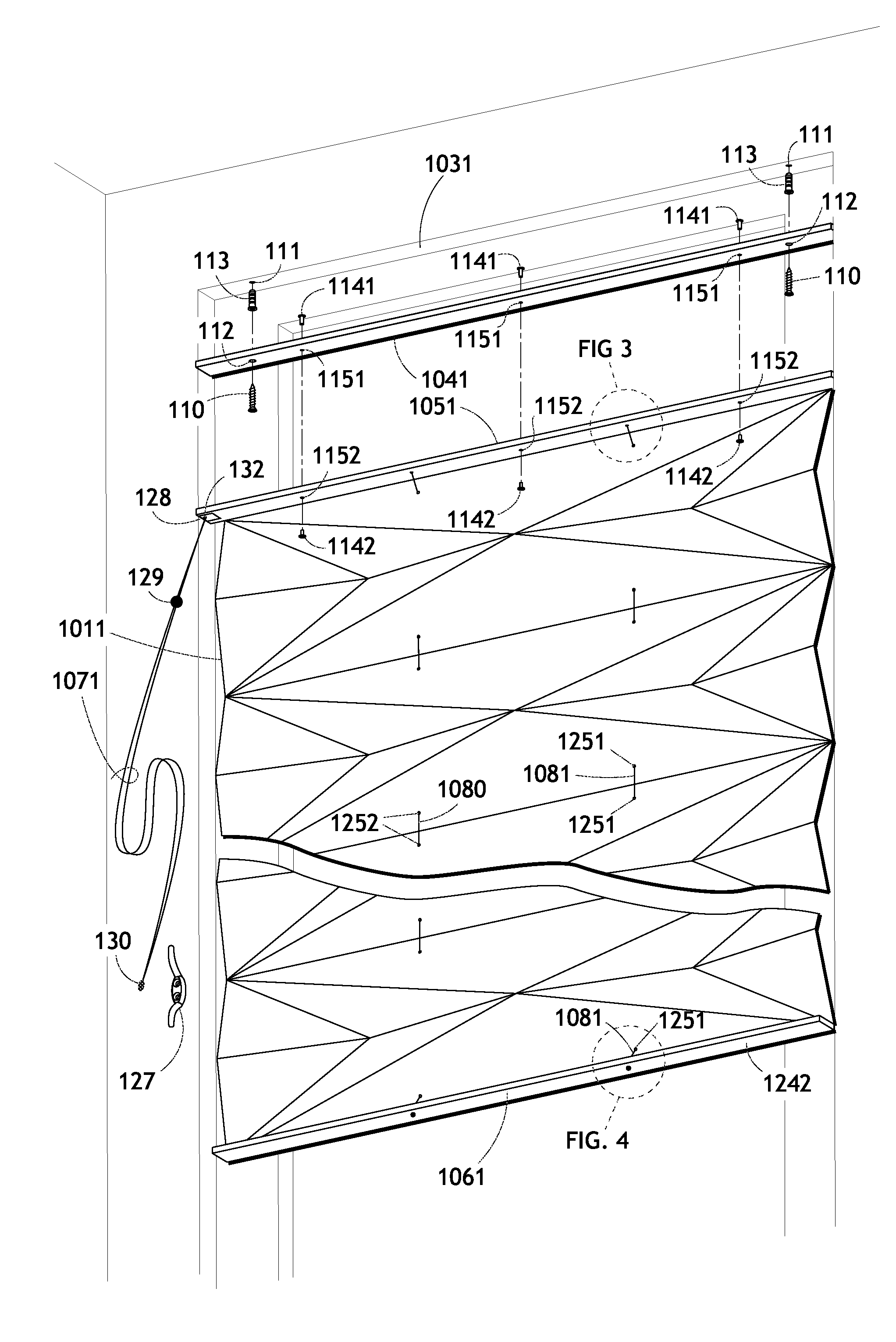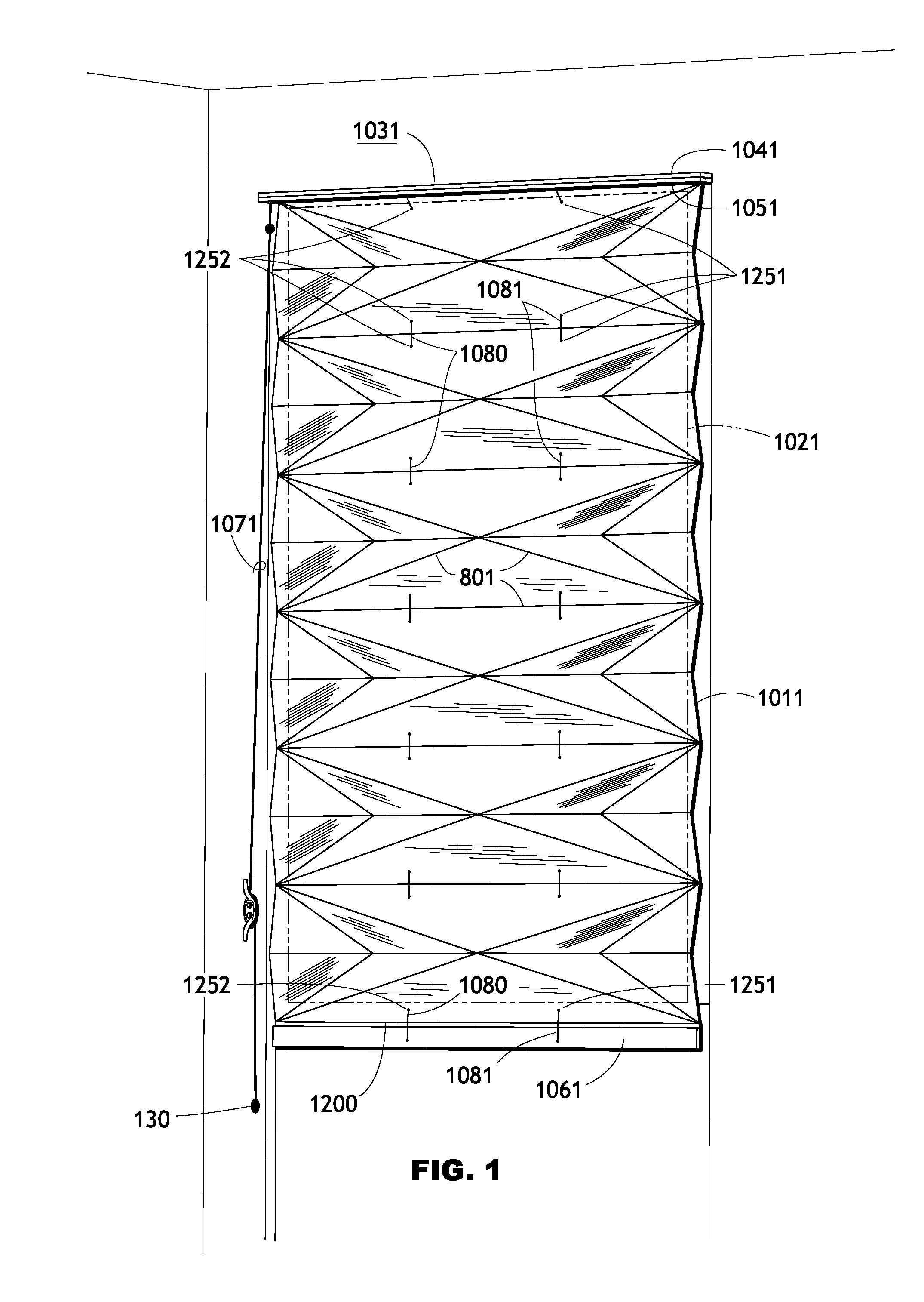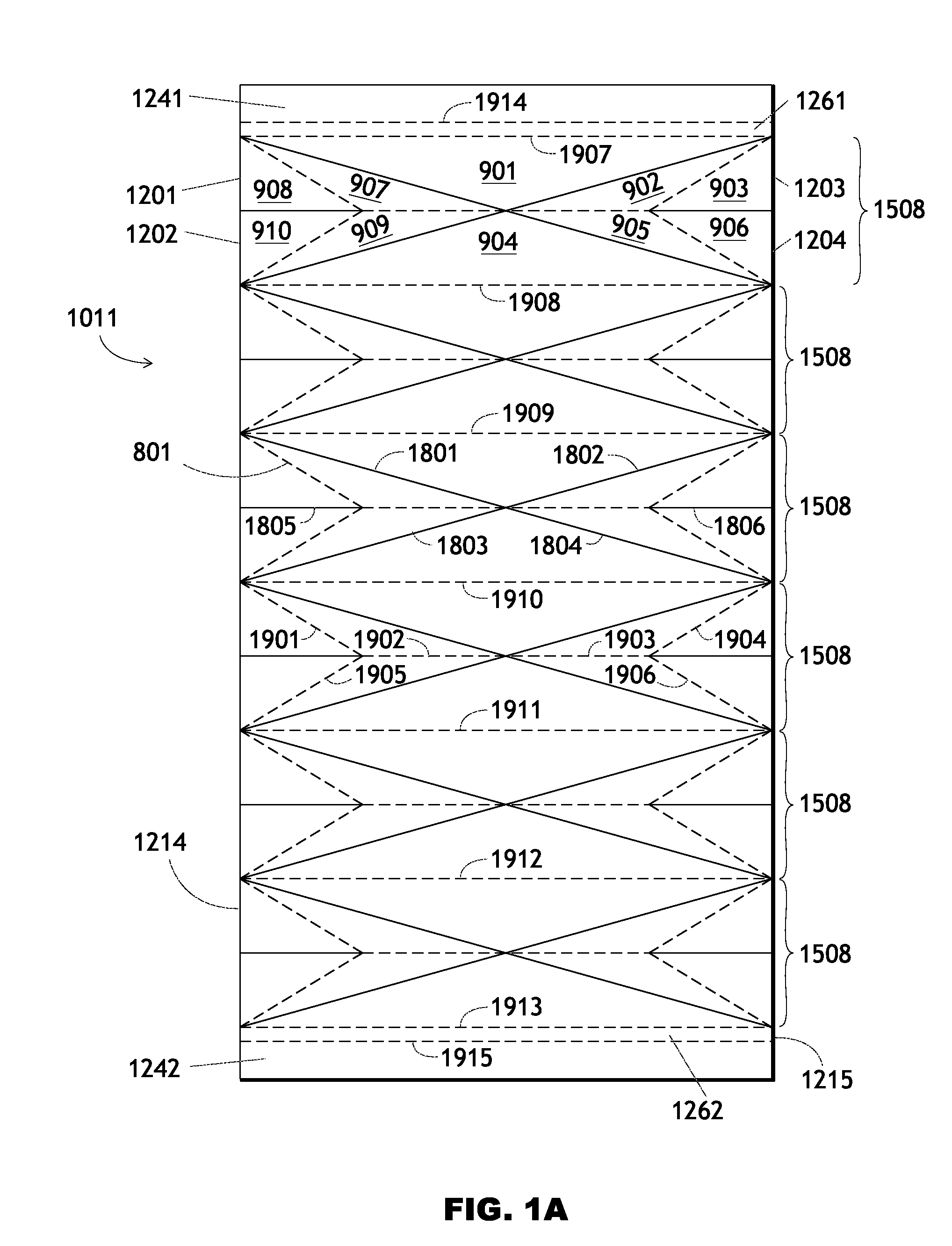Collapsable screen and design method
a technology of collapsible partitions and screens, applied in the direction of shutters/movable grilles, door/window protective devices, draperies, etc., can solve the problems of cost, labor-intensive and thus costly production of draperies and roman-type shades made of textiles, and the cost of roll-up shades is generally not solved
- Summary
- Abstract
- Description
- Claims
- Application Information
AI Technical Summary
Benefits of technology
Problems solved by technology
Method used
Image
Examples
first embodiment
FIGS. 1-8
[0146]FIG. 1 shows a perspective view of a first embodiment in its fully expanded, or lowered, state. A collapsible material 1011, forming a light-controlling device, covers or occupies a theoretical base area 1021 (indicated by a long-dashed rectangle) and hides the base area from view if the material is opaque, or somewhat obscures the base area if the material is translucent or transparent, when the collapsible material is in its fully expanded state. The base area can be for example a rectangle corresponding to and slightly offset from the panes of a window. In this embodiment the base area 1021 is several centimeters smaller in each dimension than the boundary of the collapsible material 1011.
Description of Mounting Device and Means of Operation
[0147]In FIG. 1, the embodiment is attached to the surface 1031 of a window casement, ceiling, window frame, wall, or other relatively immobile structure by way of a mounting device comprising a mounting rail 1041 and an adjacen...
second embodiment
Description—FIGS. 9-9C, 53, 54
[0161]A second embodiment is shown in FIG. 9 in its fully expanded state. In this embodiment, a single pull cord 1072 is present. A bottom rail 1062 is attached to the back side of a panel 921 within a tessellation 802 of panels and folds forming a collapsible material 1012. The pull cord 1072 passes through a series or pattern of holes 1253 and is anchored to the bottom rail 1062 by way of a ferrule or knot 1222. The series of holes causes the pull cord to follow a curved path on the collapsible material 1012. The bottom rail 1062's length is less than the material's full width, as it occupies the length of an edge segment 1205, which is one of three segments forming the bottom edge of the collapsible material.
[0162]In the embodiment's fully collapsed state (perspective view FIG. 9C and plan view FIG. 53), the panel 921 lies parallel to and as near as possible to a top rail 1052, underlying an array of folded panels 920 (visible in FIGS. 53 and 54). In...
third embodiment
Description—FIGS. 10, 55
[0164]In perspective FIG. 10 a third embodiment is shown in its fully expanded state. Each of two symmetrically disposed series of panels in a collapsible material 1013 contain limiting and limited sets of panels, corresponding to a relationship among rigid panels 911-915 in which panels 911 overlap panels 912, panels 912 overlap panels 913, and panels 913 overlap panels 914, and panels 914 overlap panels 915, permanently under normal operating conditions. An operating device comprises a pair of pull cords 1073, which have an arrangement similar to other pull cord embodiments previously described.
[0165]The aforementioned panels are also shown in FIG. 55 in a schematic representation of the collapsible material 1013 comprising the panels of the embodiment. The geometry shown is a tessellation comprising a tessellation module 1502, the module repeated along a vertical axis four times in this Fig. Likewise, sets of tessellation lines 2001-2009 are also repeated,...
PUM
 Login to View More
Login to View More Abstract
Description
Claims
Application Information
 Login to View More
Login to View More - R&D
- Intellectual Property
- Life Sciences
- Materials
- Tech Scout
- Unparalleled Data Quality
- Higher Quality Content
- 60% Fewer Hallucinations
Browse by: Latest US Patents, China's latest patents, Technical Efficacy Thesaurus, Application Domain, Technology Topic, Popular Technical Reports.
© 2025 PatSnap. All rights reserved.Legal|Privacy policy|Modern Slavery Act Transparency Statement|Sitemap|About US| Contact US: help@patsnap.com



